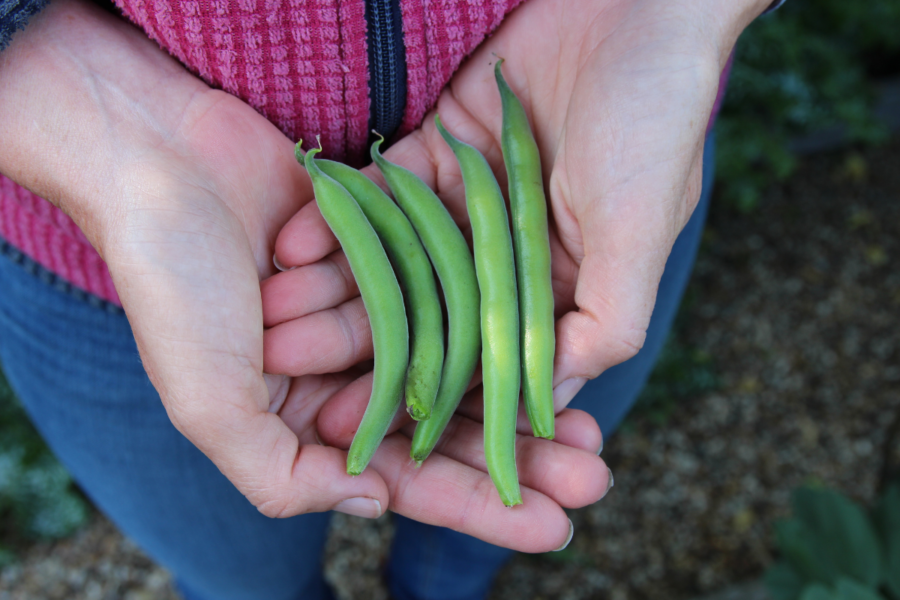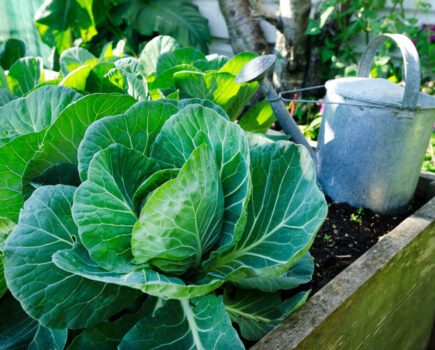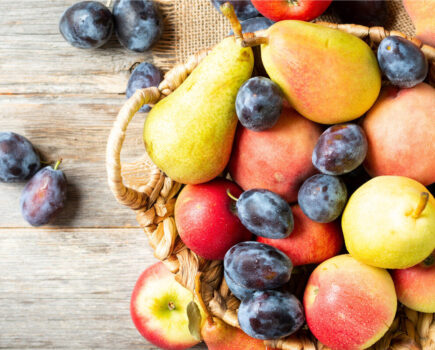These deliciously moreish beans taste phenomenal when home-grown compared to shop-bought pods, and did you know how versatile they are in the kitchen?
All stages of pod development are edible, which is great news if you’re impatient, or if your bean seeds become a little large. Here’s what I do:
Do you want an indulgent treat? When you can see small, pencil-thickness pods developing and your patience is running thin, harvest a few that size, cooking them in a rich cheese sauce. A word of caution: don’t harvest too many – you ultimately want lots of full-sized pods!
This is the harvest we’re familiar with – plump green beans which are succulent and juicy -they make an excellent side dish. I grow vast patches of broad beans to harvest at this stage. Blanch them for 30 seconds in boiling water, then open-freeze on trays, before bagging up portions for the freezer.

If, when you shell your beans, you find that the seed scar is dark, rather than white or green, it tells you that the seeds are old. Don’t fret – blanch them then pop them out of their grey skins. Then whiz them up with garlic, mint, lemon and olive oil for a pate, or fry them as a tasty bar snack.
Keep the root veg harvests rolling in

Do you love radishes, or crave beetroot, or (like me) have a bit of a thing for turnips? If so, don’t switch off your sowing radar, because these root crops bulk up quickly, especially in warm weather on a moist soil. The rate of maturity does vary a little: radishes can speed along, being ready five weeks after sowing if conditions are perfect. Turnips take a little longer (seven to eight weeks if you like baby roots) and beetroot is the slowest of this trio (ten weeks from sowing minimum, and longer if you want decent-sized roots for storage). So, keep on sowing every month or two to attain a succession of deliciously tender roots. It would be a tragedy to run out!
Vegetable mallow

I’ve experimented with eating mallows before, and you can frequently see me dashing onto the verges of country lanes in summer to pick the beautifully soft pink flowers of Malva sylvestris (common mallow). Mixed in a tempura batter, these make delicious fritters. But now, thanks to realseeds.co.uk, I’ve been introduced to vegetable mallow (M. verticillata). Don’t expect a floral extravaganza from this species – the flowers are diminutive at best. But the generous foliage makes up for it, with the edge of each saucer-sized leaf being beautifully frilled. The leaves can be shredded and wilted down as a mild-tasting green. Now my mallow experiments consist of blending these leaves with cream cheese, using them as an edible parcel for rice, and shredding them into stir fries – I’m in for a delicious summer.
Five quick jobs
- Gourmet growers – be aware! Asparagus beetle females will be feverishly laying eggs this month. If you see the egg clusters (each egg is 2mm or so long, black, and sits at right angles to the asparagus stem) simply remove and dispose of as you would other problematic interlopers.
- The yield of dwarf French bean plants often tails off after initially strong harvests of pods. By making a second sowing now, you can have vigorous new plants ready to pick up the bean baton, once your primary sowings start to fade.

- It’s prime potato lifting time – cooking bowlfuls of steaming, buttered spuds is one of life’s joys. Reduce the likelihood of stabbing soil-grown tubers with your fork by sliding prongs vertically alongside plants, then gently levering tubers from the earth.

- Fan-trained fruit trees will be putting on plenty of soft new shoots in high summer. Training them into your desired shape before they become hard and woody is key to maintaining precision, so have some soft twine ready in your pocket at all times.

- Sweet pepper plants can, on occasion, put all their energy into producing their first fruit, at the expense of developing any subsequent ones. If your plant looks to be doing this, take a deep breath and remove this primary pepper, so that many more fruits form.

Find more tips, advice and articles like this at the Amateur Gardening website. Subscribe to Amateur Gardening magazine now





